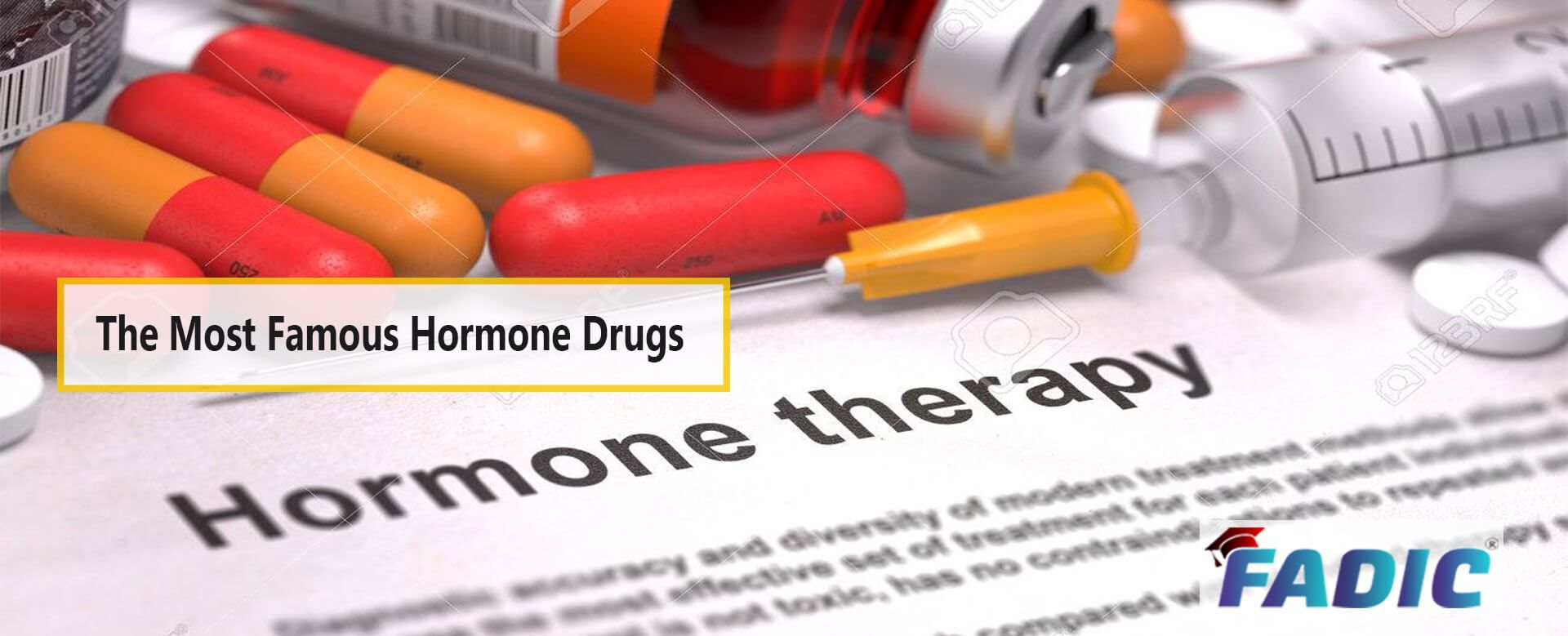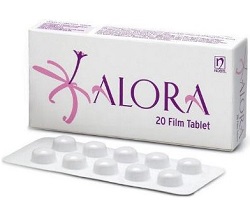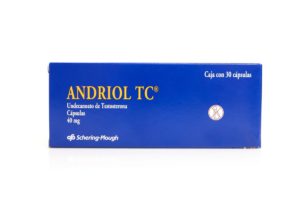The Most Commonly Used Hormone Therapy Drugs
The Most Commonly Used Hormone Therapy Drugs
The Most Famous Hormone Drugs are:
1- Estradiol 💊
2- Estrogens 💊
3- Testosterone 💊
Estradiol
- Brand Names: Alora
- Therapeutic Category: Estrogen Derivative, Hormone
- Dosage Forms: Gel, Transdermal/ IM oil/ Patch Transdermal/ Ring, Vaginal/ Tablet oral
- Use: Labeled Indications:
- Breast cancer/ Hypoestrogenism/ Osteoporosis prevention/ Prostate cancer/ Vasomotor symptoms associated with menopause/ Vulvar and vaginal atrophy associated with menopause
- Dosing : Adult : Breast cancer: Males and postmenopausal females: 10 mg 3 times/day
- Hypoestrogenism: Oral (Estrace): 1 to 2 mg/day
- Vasomotor symptoms (moderate to severe) associated with menopause: Oral (Estrace): 0.5 to 1 mg once daily
- Dose Adjustments
- Renal Impairment: no dosage adjustments
- Hepatic Impairment: Contraindicated with hepatic dysfunction or disease
- Adverse Drug Interaction:
Edema , hypertension, cerebrovascular accident, deep vein thrombosis, local thrombophlebitis, myocardial infarction, pulmonary thromboembolism, Headache, pain, depression - Pharmacodynamics/Kinetics:
- Absorption: Well absorbed from the gastrointestinal tract, mucous membranes, and the skin
- Metabolism: Hepatic
- Excretion: Primarily urine
- Important Notes:
- There is an increased risk of endometrial cancer in a woman with a uterus who uses unopposed estrogens. Adding a progestin to estrogen therapy has been shown to reduce the risk of endometrial hyperplasia, which may be a precursor to endometrial cancer
- Pregnancy & Lactation: Products approved for use only in postmenopausal women are not appropriate for use in pregnancy/ present in breast milk.
- Medication Safety issue:
Alora may be confused with Aldara
Elestrin may be confused with alosetron
Highly recommend online Marketing tool from SEMRUSH
Estrogens (Conjugated/Equine, Systemic)
- Brand Names: Premarin
- Therapeutic Category: Estrogen Derivative, Hormone
- Dosage Forms: Oral(Tablet) , Injection (Solution Reconstituted)
- Use: Labeled Indications:
- Abnormal uterine bleeding/ Breast cancer/ Hypoestrogenism/ Osteoporosis prevention/ Prostate cancer/ Vasomotor symptoms associated with menopause/ Vulvar and vaginal atrophy associated with menopause
- Dosing : Adult : Abnormal uterine bleeding: Acute/heavy bleeding: IM, IV: 25 mg, may repeat in 6-12 hours if needed
- Breast cancer: Oral: Males and postmenopausal females: 10 mg 3 times/day for at least 3 months
- Hypoestrogenism (female) due to hypogonadism: Oral: 0.3 or 0.625 mg/day given cyclically; dose may be titrated in 6- to 12-month intervals
- Dose Adjustments
- Renal Impairment: no dosage adjustments
- Hepatic Impairment: no dosage adjustments
- Adverse Drug Interaction:
Headache/ pain/ Abdominal pain/ Vaginal hemorrhage/ mastalgia/ Back pain / arthralgia - Pharmacodynamics/Kinetics:
- Half-life elimination: Total estrone: 27 hours
- Metabolism: Hepatic
- Time to peak, plasma: Total estrone: 7 hours
- Important Notes:
- There is an increased risk of endometrial cancer in a woman with a uterus who uses unopposed estrogens. Adding a progestin to estrogen therapy has been shown to reduce the risk of endometrial hyperplasia, which may be a precursor to endometrial cancer
- Pregnancy & Lactation: Use is contraindicated during pregnancy/ Estrogens can be detected in breast milk
- Medication Safety issue:
Premarin may be confused with Primaxin, Provera, Remeron
Testosterone
- Brand Names: Andriol
- Therapeutic Category: Androgen, Hormone
- Dosage Forms: Gel (Nasal/ Transdermal)/ Patch Transdermal/ Pellet, Implant / Capsule, Oral/ Solution, Intramuscular
- Use: Labeled Indications:
- Breast cancer, metastatic / Delayed puberty/ Hypogonadism, hypogonadotropic/ Hypogonadism
- Off-Label: Adult: Hormone therapy for transgender males
- Dosing : Adult : Breast cancer (females): IM : 200 to 400 mg every 2 to 4 weeks.
- Delayed puberty (males): IM: 50 to 200 mg every 2 to 4 weeks for a limited duration (eg, 4 to 6 months).
- Hypogonadism (primary) or hypogonadism (hypogonadotropic) (males): IM:Initial: 75 to 100 mg/week or 150 to 200 mg every 2 weeks; dosage range: 50 to 100 mg/week or 100 to 200 mg every 2 weeks
- Dose Adjustments
- Renal Impairment: no dosage adjustments
- Hepatic Impairment: no dosage adjustments
- Adverse Drug Interaction:
Hypertension, benign prostatic hypertrophy, Peripheral edema, peripheral vascular disease, Emotional lability - Pharmacodynamics/Kinetics:
- Bioavailability: relative bioavailability decreased 25% when taken with lower fat content meal
- Half-life elimination: Variable: 10 to 100 minutes; Testosterone cypionate: 8 days
- Time to peak: IM: 7 days, Oral capsule: 2 to 4 hours
- Important Notes:
- Testosterone undecanoate and testosterone enanthate can cause blood pressure (BP) increases that can increase the risk of major adverse cardiovascular events
- Pregnancy & Lactation: contraindicated during pregnancy./ present in breast milk.
- Medication Safety issue:
Testosterone may be confused with testolactone
AndroGel 1% may be confused with AndroGel 1.62%
Bio-T-Gel may be confused with T-Gel
Read More:
- Antimicrobial Stewardship School
- Sepsis Training Program
- Download Pocket Guide for Antibiotic Pharmacotherapy Book
- Microbiology Course | ABC Bacteria
- Infectious Disease E-News | FREE Subscription
- ABC antimicrobials | Know all about the Antimicrobials
- Road Map to Antimicrobial Stewardship Training Program
- Register Now in FADIC Clinical Research School
- FADIC Drug Information Fellowship
- Buy FADIC Toolkit for Writing Research to Write a Great Research Paper
- Read 10 Skills You Must Learn to Make a Research via Google Scholar in Arabic
- The FADIC Online Continuous Medical Improvement Programs & Mini-Courses.
- Check Now FADIC Book store and Buy books in different specialties.
- Watch Now FADIC TV to Keep your self Updated.
- FADIC Podcast focusing on varieties of pharmacist perspectives in different specialties.
- Subscribe Now in FADIC 2020 Daily News (FNN) and Keep Updated.
- Check Now about Coronavirus Resource Information Center.

 Log in
Log in Sign up
Sign up






